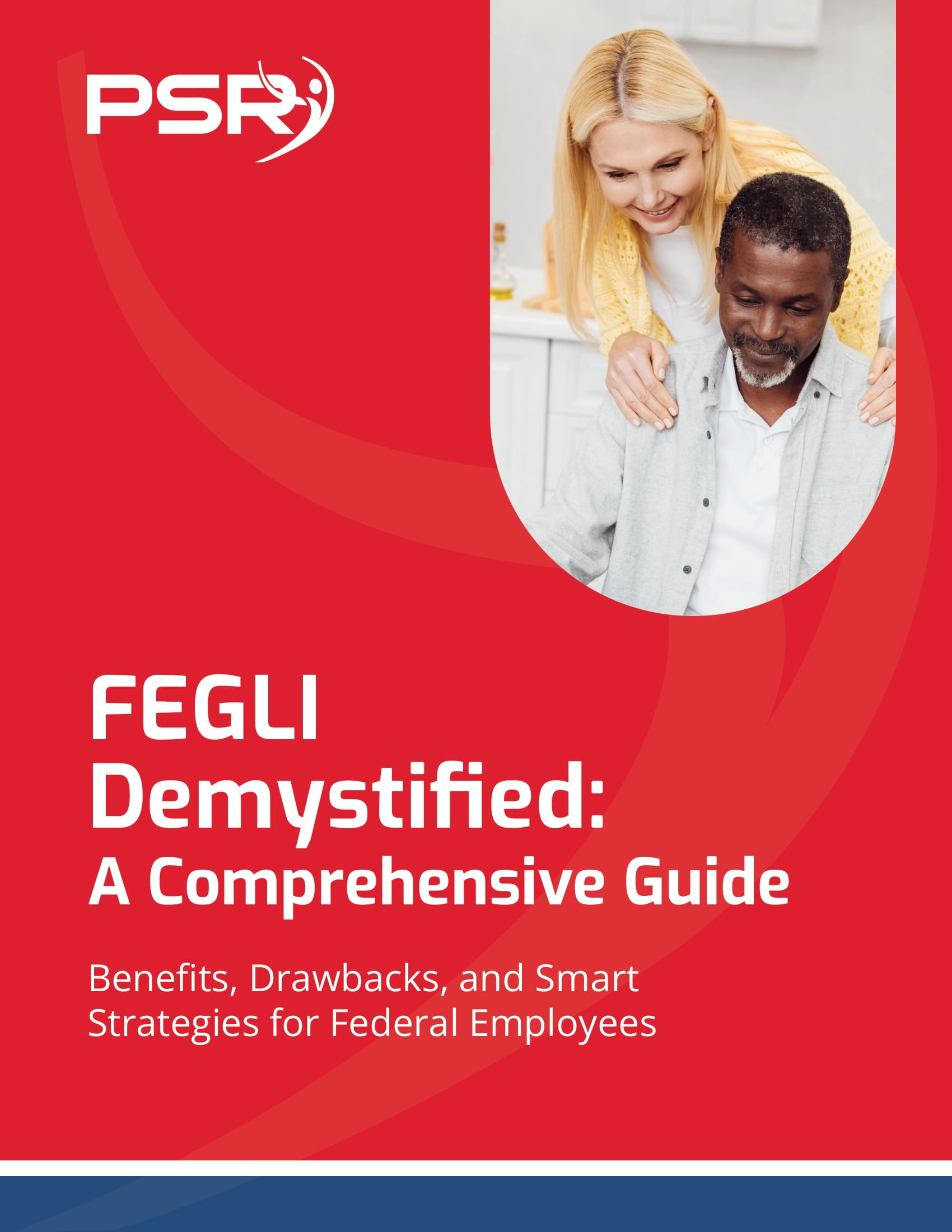Key Takeaways
-
In 2025, federal employees are facing new financial realities that are pushing them to reassess survivor benefit elections more carefully.
-
Changes in retirement income planning, life expectancy trends, and health coverage rules are making it more critical to personalize survivor protection rather than relying on default options.
Why Survivor Benefits Are Under a New Spotlight in 2025
When you approach retirement as a federal employee, one of the most significant decisions you face is whether to elect a survivor benefit for your spouse. In 2025, more employees are pausing to reexamine this choice because several evolving factors make past assumptions less reliable.
- Also Read: Survivor Benefit Elections Can Affect More Than One Generation—Here’s What You Should Consider
- Also Read: Federal Retirement Reforms Are Already Happening—Just Not in the Headlines
- Also Read: Law Enforcement Officers Have Special Retirement Perks—Are You Getting the Most Out of Yours?
The Basics: What Survivor Benefits Cover
When you retire under the Federal Employees Retirement System (FERS) or Civil Service Retirement System (CSRS), you have the option to elect a survivor annuity. This provides ongoing income to your spouse if you pass away first.
-
FERS: You can elect a maximum survivor benefit of 50% of your unreduced annuity or a partial option at 25%.
-
CSRS: The maximum is 55% of your unreduced annuity.
The survivor election reduces your own monthly retirement benefit. If you choose the maximum coverage, the cost is typically around 10% of your annuity.
Why the 2025 Landscape Is Different
Several trends are making survivor benefit elections more complex in 2025:
-
Increased life expectancy: Spouses may outlive retirees by decades.
-
Higher healthcare costs: Especially for long-term care and end-of-life expenses.
-
Social Security adjustments: The repeal of the Windfall Elimination Provision (WEP) in early 2025 has shifted benefit planning.
-
PSHB transition for USPS employees: New healthcare coverage rules for postal retirees affect survivor protections.
Each of these shifts means you need to think more strategically about protecting your spouse.
1. The Risk of Underestimating Longevity
In 2025, the average life expectancy for Americans continues to rise. Many federal retirees and their spouses now face the realistic possibility of living 30 years or longer in retirement.
This extended longevity increases the risk that:
-
Your spouse could outlive you by 10, 20, or even 30 years.
-
Retirement savings may be depleted if survivor income is insufficient.
-
Unexpected healthcare and assisted living costs may arise.
Failing to elect a strong survivor benefit could leave your spouse vulnerable during their later years.
2. Rising Healthcare Costs Are Shaping New Priorities
Healthcare expenses have surged since 2024, and in 2025, they are a top concern for retirees.
Medicare Part B premiums, deductibles, and coinsurance amounts have all increased. Even with coordination between Medicare and FEHB or PSHB plans, out-of-pocket expenses can add up quickly.
If you pass away first, your spouse will lose your pension income unless protected by a survivor annuity, and they may have to shoulder full healthcare costs alone. Survivor benefits can act as a financial buffer to cover these rising healthcare costs.
3. Changes in Social Security Planning
The repeal of the Windfall Elimination Provision (WEP) in January 2025 has reshaped the Social Security picture for many federal retirees.
Without WEP, public sector retirees may now receive full Social Security benefits. However, survivor benefits through Social Security (widow or widower benefits) might still be subject to income taxes or reductions if retirement income exceeds thresholds.
This uncertainty makes the FERS or CSRS survivor annuity an even more important backup to protect family income.
4. New Health Coverage Rules for Postal Retirees
As of January 1, 2025, postal retirees and employees transitioned from FEHB to PSHB.
Key considerations:
-
Mandatory Medicare Part B enrollment for many postal retirees.
-
Integrated prescription drug coverage through a Medicare Part D plan.
Survivor benefits can help spouses continue paying PSHB premiums and Medicare costs without disruption. If you do not elect a survivor benefit, your spouse may lose access to important health benefits they rely on.
What Happens If You Elect No Survivor Benefits?
If you waive survivor benefits entirely:
-
Your spouse loses the option to continue FEHB or PSHB health insurance after your death unless otherwise eligible.
-
No survivor annuity will be paid.
-
Your spouse may have to rely solely on Social Security, personal savings, or life insurance.
It is critical to remember that FEHB and PSHB require a survivor annuity election of at least 25% in order for the spouse to continue health insurance coverage after your passing.
Why Some Federal Employees Are Reconsidering Partial Elections
Some retirees opt for the 25% survivor benefit option instead of the full 50% (FERS) or 55% (CSRS). While this reduces the cost during your lifetime, it significantly lowers the income your spouse will receive.
In 2025, many employees are questioning whether the savings during their lifetime are worth the potential risk to their spouse’s future financial security.
Key questions to ask:
-
Will my spouse’s income needs increase if I pass away?
-
Is my spouse healthy enough to live independently for decades?
-
How stable are our other retirement income sources (TSP, Social Security, personal savings)?
The Hidden Impact of Inflation on Survivor Income
Even if you elect the maximum survivor benefit today, remember that future inflation will erode its purchasing power.
While FERS and CSRS survivor benefits receive annual cost-of-living adjustments (COLAs), these are sometimes lower than the full inflation rate.
In 2025, the Social Security COLA was 3.2%. FERS COLAs are often calculated at a slightly lower rate. This “COLA diet” effect means:
-
Survivor annuities could lose real value over time.
-
Planning for inflation protection is critical.
Some federal employees are considering combining survivor benefits with inflation-protected income sources, such as TSP withdrawals or other annuities.
Life Insurance and Survivor Benefits: A Balanced Approach
Some retirees consider using life insurance instead of electing survivor benefits.
While life insurance can provide a lump sum payout, it is not a direct replacement for a monthly lifetime income. Plus, purchasing new life insurance in your 60s or 70s may be costly or unavailable depending on your health.
In 2025, many financial planners suggest blending survivor annuities and life insurance:
-
Elect at least the partial survivor benefit to maintain health insurance eligibility.
-
Supplement with a carefully calculated amount of life insurance if needed.
Timing Matters: Survivor Benefit Elections Are Often Final
When you submit your retirement paperwork, your survivor benefit election is usually final.
-
During retirement: You generally cannot add survivor benefits later unless under very limited circumstances (such as a post-retirement marriage).
-
Before final separation: Changes can be made, but once your retirement is finalized, elections become binding.
This makes it even more important in 2025 to work closely with a licensed professional before finalizing your retirement application.
How Divorce Affects Survivor Benefits
If you have a former spouse, divorce decrees or court orders may require you to elect a survivor benefit for your ex-spouse.
This can complicate decisions for your current spouse. In 2025, divorce-related survivor benefits remain enforceable, even if you remarry. You must factor in these obligations when planning.
-
Tip: Check all court orders and ensure compliance to avoid legal and financial surprises.
Your Action Plan for Survivor Benefits in 2025
If you are within five years of retirement, it is critical to start mapping your strategy now.
-
Review your FERS or CSRS projected annuity estimates.
-
Understand how your health insurance eligibility for your spouse depends on your survivor election.
-
Evaluate your spouse’s Social Security eligibility.
-
Assess healthcare and long-term care costs.
-
Work with a licensed professional to model income needs and inflation impacts.
Choosing survivor benefits is not a checkbox decision. It is an integral part of safeguarding your spouse’s financial future.
Protect Your Spouse’s Future with the Right Survivor Election
In 2025, federal employees face a different and more complex retirement environment than in the past. Survivor benefit elections have become a much more strategic and individualized decision.
Take the time to carefully review your options. Protecting your spouse’s income, health coverage, and peace of mind is a lasting legacy worth planning for.
If you are uncertain about your survivor benefit options, contact a licensed professional listed on this website to help you evaluate your best strategy.













